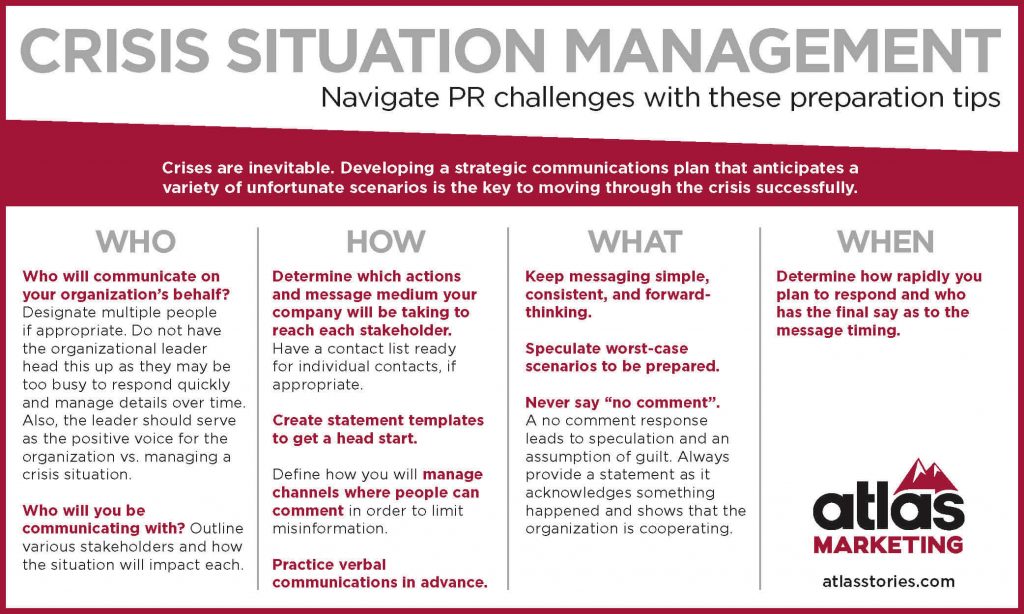Crisis Preparation – How to Manage a Crisis Situation

Crises are inevitable. Whether it’s a natural disaster disrupting your production and distribution, an accident, or a website cutting off your main sales channel, you need to be prepared. Understanding how to manage a crisis situation relies on planning and preparation, which means developing a strategic communications plan that anticipates these unfortunate scenarios and dictates how to communicate during them to your various audiences.

Who should I talk to
Audiences include various stakeholders such as employees, customers, the general public, media, government officials, and regulators. Each will want to know how the situation impacts them, which actions you or your company will be taking and how you will be managing the situation most effectively, so focus your messages on those points.
While preparing for the types of crises you may encounter, make lists of those who need to be contacted, and determine how to best reach them, quickly. As we have seen during the COVID pandemic, crisis situations remain fluid and preparation requires responses in rapid succession at times. A perfect example of this fluidity is the need to explain how employees, if feasible, can continue to work remotely or at alternate locations or with alternate technology.
How do I talk to them
Your website and social media channels should be relied upon heavily because of their ability to reach multiple audiences. Monitor social media to gauge reaction to the situation and respond appropriately. Most employees and key stakeholders will become your main audience via these channels. Since you control the messaging in these environments, it is your responsibility for maintaining consistent updates to keep audiences informed and reduce misinformation.
Your crisis preparation plan should identify who will be sending those messages. Department heads or human resources may be charged with contacting employees. The company’s public relations manager or agency can make statements to the media and public officials if the situation warrants it. I strongly encourage not enlisting the CEO or highest-ranking officer as a spokesperson for two reasons – first, it is this person’s responsibility to oversee the company and ensure that operations continue. Secondly, and more importantly, the CEO should be the bearer of good news and not become the face of a bad situation. Don’t get me wrong the CEO should be heavily involved, kept current as the crisis unfolds, and extremely focused on employees.
Practice, practice, practice

Because you have anticipated potential crises, you can create templates in advance for your statements. These templates will give you a head start on creating your messages and allow you to deliver them in a timely manner.
You should strive to keep messaging consistent while remaining brief and forward-looking. Lastly, when practicing, think of the worst-case scenario because Murphy’s Law is always in effect during a crisis.
PLEASE Don’t do this
Never say no comment. Please. Just don’t. Offering a no comment response leads to speculation and an assumption of guilt. Always opt for a holding statement. This message provides an acknowledgment that something happened, kind words for those affected, and direction that you are cooperating with others. As information becomes available provides updates to all stakeholders and the media, if necessary. If you have prepared, followed your plan, and are knowledgeable of the situation there is no need to offer a no comment response. Tell your story and don’t be afraid.
Preparation for a crisis situation may be a delicate dance, but it’s not difficult. In fact, by planning and preparing for a crisis to occur, you will be ahead of the game and will be ready to manage the situation with expertise. After the dust has settled, don’t forget to review your response and update your crisis communications plan with lessons learned that could assist you in future crises. You’ll do just fine!
